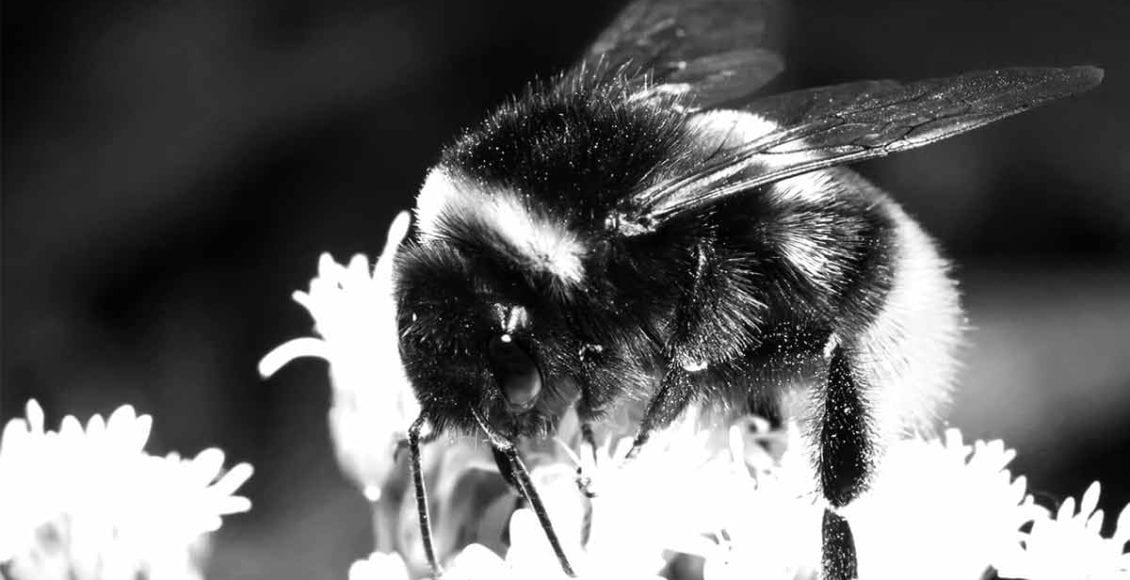The bumblebee has officially entered the list of endangered species.
It is now official that bumblebees along with the grizzly bear, the northern spotted owl, Lange’s metalmark butterfly and about 700 other species are in the list of animals that are very likely to become extinct. This bee was once abundant in the prairies of the East and Midwest. But today it lives in small, scattered populations in 13 states. Its population keeps decreasing at an alarming rate, and it is now under protection in the continental US.
Just for the record: 347 species of bees native to North America and Hawai have been teetering on the brink of extinction. That is what a study led by the Center for Biological Diversity declared. It was published in February 2018, under the name ‘Pollinators in peril.’
The rusty patched bumble bee lives in eastern North America.
Bumblebees are large, fuzzy insects with short, stubby wings. They are larger than honeybees, but they don’t produce as much honey. However, they are vital pollinators. Without them, food wouldn’t grow. Its scientific name is Bombus affinis. The insect was named for the red patch of its second abdominal segment.
Bumblebees are generally cold-tolerant insects, but the rusty-patched bumble bee is unique; it flies in cold and warm weather that many kinds of bees cannot deal with. This cold-tolerance means that rusty-patched bumble bees are active for the most of the year. That is why they need access to a variety of flowers over an extended period.
According to Reuters the decline of the bumblebee population is caused by many factors.
Among the various reasons for this problem are disease, climate change, and habitat loss. But, it’s the most popular way of food production in this country — monoculture farming and the application of pesticides and herbicides on crops genetically manipulated to resist them — that has wiped out or severely decreased populations of the bumblebee pollinators.
People’s invasion damaged a lot of the places where the bumblebee naturally thrive.
Consequently, the population of the species started decreasing significantly. The classification of this bee as endangered species will help to preserve the tall grasses. As well as to protect the grasslands which are the bee’s and other pollinators’ natural habitat.
It took much more time to put this bee into the list of threatened species.
“Our main goal is to act as fas as possible to stop the extinction of the rusty-patched bumblebee,” declared wildlife service Midwest regional director Tom Melius. “Listing the bee as endangered will encourage our partners to support us. It will also help to find resources to stop the decline.”
And finally, the rusty-patched bumblebee has officially been categorized as endangered species.
Many environmental organizations praised this act. The Xerces Society for Invertebrate Conservation that initially requested for the listing back in 2013, also shared their opinion.
“We are pleased to see one of North America’s most endangered animals receive the protection it deserves” declared Sarina Jepsen, director of endangered species for the group.
The pollinators are responsible for the circulation of about one-third of our food supply.
Rebecca Riley, senior attorney with the Natural Resources Defense Council, said that a decline in the population of bees could lead to a decrease in the amount of food humans can produce. That is why the listing of the rusty-patched bumble bee as endangered is considered one of the most significant species listings.
“Today’s Endangered Species listing is the best — and probably last — hope for the recovery of the rusty-patched bumblebee,” said Rebecca Riley, an attorney with the Natural Resources Defense Council. “Bumblebees are likely to become extinct. They disappear from the gardens, farms, and parks, where they once lived in great numbers.”
However, not everybody supports the protection of the bumblebee.
The classification of the rusty-patched bumble bee as an endangered species could face great difficulties from several industries, corporations, and developers.
“The implications of this hastily prepared listing decision is difficult to overstate.” That is said in a petition requesting a year’s delay in the listing.
The petition to the Secretary of the Interior and Acting Director of the U.S. Fish and Wildlife Service is signed by the National Rural Electric Cooperative Association, National Association of Home Builders, American Petroleum Institute, National Cotton Council of America.
The coalition of signatories might file a lawsuit.
Bumblebees’ annual economic value to farms is estimated at $3.5 billion, according to experts. But, those who have signed the petition view the protection of one animal species as a problem. Darryl Fears of the Washington Post thinks that signatories might file a lawsuit to exclude the bee from the list.
However, de-listing the bumblebee is counterproductive and recessive.
This insect really is an endangered pollinator. On the top of that, the dramatic decline of its population is only one of the problems regarding the North American bumblebee species. One out of every four kinds of bumblebees on the continent is endangered, according to The Xerces Society for Invertebrate Conservation.
How can individuals help?
The U.S. Fish and Wildlife Service suggests that people could plant a garden or add a flowering tree or bush to yards and avoid using pesticide, to help increase the rusty-patched bumblebee population. Leaving some sections of the yard unmowed in summer and unranked in fall can also help since bumblebees need a good place to make their nests and spend the winter. People could also leave standing plant stems in gardens and flower beds in winter.


